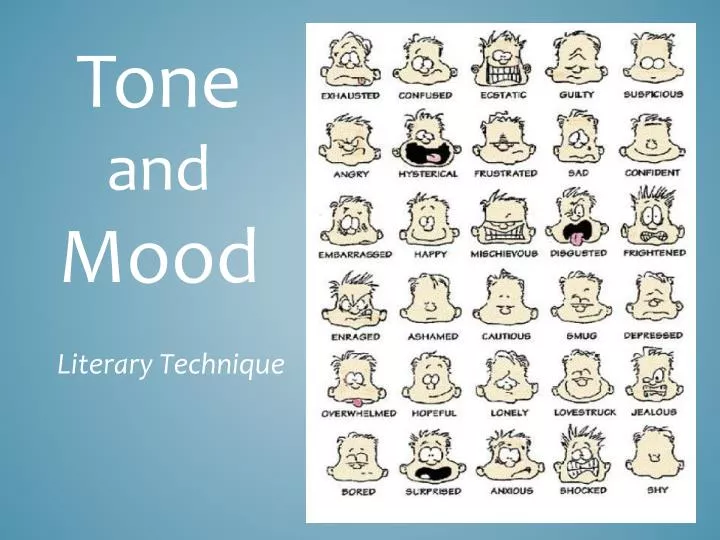

For instance, a murder mystery will usually require surprising plot twists to create a suspenseful mood. Clearly, this has the most important role in forming the mood. Subject Matter refers to the main theme of a story or the plot of the story. For example, an author might use old English words like ‘thy’ and ‘thee’ instead of ‘your’ and ‘you’ to create a Shakespearean mood. The author’s choice of words and their style of writing sentences is called the diction of the story. While the tone of the passage might be lighthearted if the characters are having fun, the mood of the story might be frightening.

For instance, in a horror novel, the main characters might be camping in the forest. The tone can also create contrast with the mood, to create suspense. For example, an author writing about something that frustrates them might use an angry tone, to create an angry mood for the reader as well. ToneĪn author’s tone shows their attitude towards the story. For example, a story that takes place in a haunted house at night will likely create a scary, gloomy mood. It’s one of the first things an author describes and is important in creating the mood. Elements of Mood SettingĪ story’s setting refers to when and where it takes place. On some occasions, the tone and mood of the story might be the same. The mood also might differ from reader to reader, but the tone of the author remains the same. It’s different from the mood of the story since a mood is all about the reader’s feelings. It shows the author’s feelings towards a topic or a character. Tone refers to the author’s use of words and their writing style. The Hound of the Baskervilles by Arthur Conan Doyle features a puzzling, ominous mood as detective Sherlock Holmes tries to uncover the mysterious identity of a fearsome and supernatural hound. It can also be scary and gripping, like in horror stories. Mysterious: this mood is suspenseful and thrilling. In Lewis Carroll’s Alice in Wonderland, Alice falls down a rabbit hole and finds herself in a weird world with a smiling cat, a talking caterpillar, playing-card soldiers, and several other strange creatures! Random events take place and characters often do illogical things.

Madness: this mood is chaotic and absurd. Jerome, the characters experience several comical events and misunderstandings that make the story amusing. Humorous: this mood contains funny incidents and hilarious situations that make you laugh. A story’s mood is created with the help of the setting, imagery, the types of words used, and their tone. Mood in literature is the general atmosphere and emotions the author wants the reader to feel while reading the book. A single book can have many different moods at different points. The mood of a story affects your mood in real life! It is an important tool used by authors to make their stories more interesting and to give you a sense of what’s to come. Mood in literature refers to the feelings you take away from reading the story. Let’s learn more about mood in literature. For example, if a story starts like “Harry was excited for his school trip to the zoo”, it will most likely have a fun and casual mood. Have you ever started reading a horror novel and felt creeped out? Every time we read, we feel certain emotions connected to the kind of story it is.


 0 kommentar(er)
0 kommentar(er)
